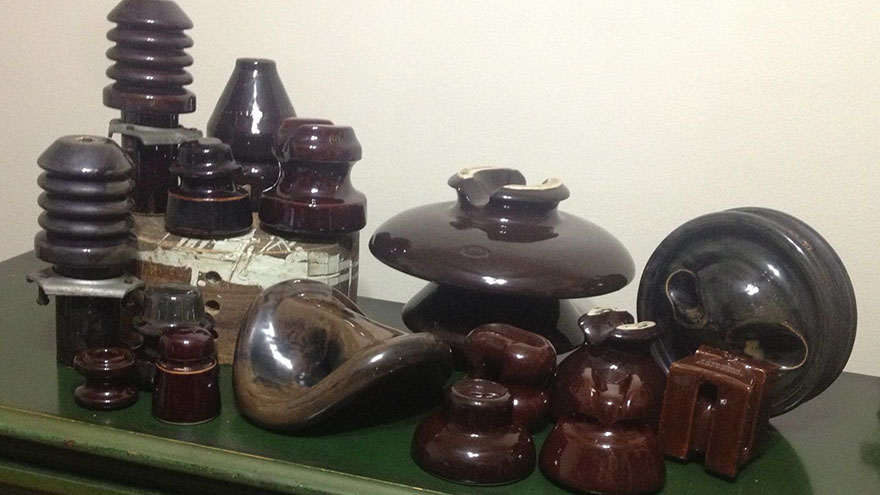Porcelain Insulator Failure
The use of porcelain insulators in home electrical wiring systems was a common practice from the late 1800s up until the 1950s.
Homes equipped with porcelain insulator wiring may encounter more than their fair share of electrical problems due to the design of these insulator pieces. Porcelain insulator failure results from the breakdown of the porcelain material.

Porcelain Insulators
Porcelain insulator materials were commonly used to insulate wires in houses built before the 1950s. Porcelain insulators — also known as “knobs and tubes” — appear as protective coverings for wires that run in open space areas and for wires run through wood joist and stud structures.
Open space areas use the knob-shaped insulator piece, while tube-shaped pieces insulate the wires that run through wood. And while porcelain materials carry strong thermal and electrical resistance properties, porcelain naturally develops micro-cracks, which form as a result of the drying process after porcelain materials are made.
Function
The knob-and-tube designs used for porcelain insulators consist of two individual wires that connect to and run through a porcelain knob or tube piece. Porcelain insulators are designed to work with electrical fuse box wiring and not the circuit breaker boxes found in newer homes.
As a result, porcelain insulators lack the protective ground wire that reduces the likelihood of fires. Porcelain insulators also have a protective glaze that tends to wear away with time. This glaze acts as a sealing barrier for porcelain surfaces. The overall design of a porcelain piece makes for a low capacity insulator that’s vulnerable to electrical overloads, burnouts and failure.
Damage
Damage to a porcelain insulator can affect its ability to direct and contain electrical currents. Damage may appear as cracks along porcelain surfaces or malfunctions within the pins that connect the porcelain piece to its wiring.
As wire insulation appears within different areas of a home, climate conditions, such as moisture or extreme temperatures, may further contribute to breakdown of a porcelain-based insulator. Under these conditions, porcelain insulator failure becomes more likely in cases where electrical overloads occur.
Electrical Overload
Technology advancements and updates in appliance design are best suited for circuit breaker-based electrical systems, simply because of the electricity requirements of newer appliances.
A home equipped with updated appliances, and heating or cooling systems can overload an electrical system that uses fuse box wiring and porcelain insulators. The likelihood of porcelain insulator failure remains even in cases where fuse box wiring has been replaced with a circuit breaker system since the electrical demands from the system exceed porcelain insulator capacities.
You Might Also Like :: Defrost Timer Failure

